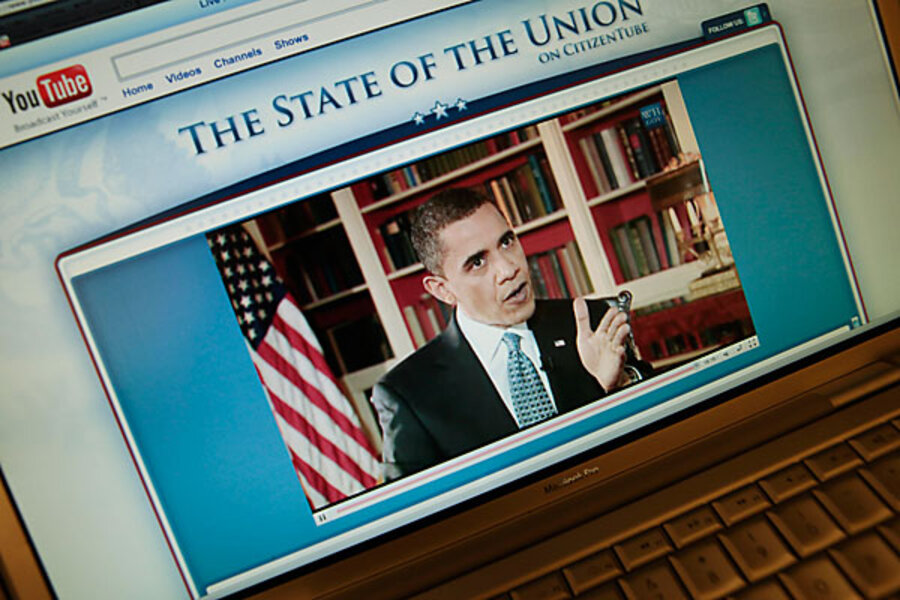Three reasons Obama on YouTube is better than a press conference
| Washington
President Obama answered questions on YouTube for 40 minutes on Monday. It was a new method of voter outreach, certainly. But was it better than a presidential press conference?
In some ways, maybe it was.
NORMAL QUESTIONS. Questions were submitted by viewers following Mr. Obama’s State of the Union address last week. Generally, they were phrased in a sort of open-ended manner, which is the way people who aren’t prosecutors, or White House journalists, talk.
One hopeful entrepreneur asked: “What is being done to free up funding for small business?” for instance.
Obama replied by making the point that Small Business Administration loan authority has increased, among other things.
Frederick from South Florida (few questioners were fully identified) wanted to know what the White House was doing “to help people stay in their homes?”
Obama replied that 4 million people have taken advantage of a White House-established loan-modification program.
No one asked, “Mr. President, your critics say that you aren’t doing enough on X. How do you respond? And I have a follow-up.”
MORE VARIETY. White House press conferences tend to have themes. Reporters ask questions that revolve around one or two of the leading trends in the news. If Obama were to hold one this week, for instance, he’d have to explain where the healthcare reform effort might, or might not, be going. And he’d have to explain that a number of times.
But the YouTube appearance included questions on a wide array of topics, including the situation in Sudan, the outlook for nuclear energy, and what Obama thinks should be the purpose of public education.
On that last point, a math teacher asked Obama: “What do you want public education to help students become?”
“I’m a big believer that the most important thing that a kid can learn in school is how to learn and how to think,” said Obama.
“GOOD IDEA, BAD IDEA.” Plus, the president’s appearance on a website known for cute pet videos and stop-action Lego movies included a game! You don’t get that with the White House press corps. At least, not overtly.
It was called “Good Idea, Bad Idea,” and involved Obama making snap judgments about stuff submitted by viewers.
Privatize the Post Office? Bad idea, because private industry is not going to want to lose money delivering post cards in North Dakota.
Put solar panels on federal and state office buildings, and schools? Good idea, according to Obama. “We want to do everything we can to encourage clean energy,” he said.
But in one very obvious, very important way, the YouTube experiment was vastly inferior to a press conference.
Yes, reporters can be blowhards who are more interested in preening than obtaining information for the public. Yes, they’re more interested in bad news than good. Yes, they dress badly. (OK, that’s print reporters, not TV.)
But they ask things that presidents don’t want to answer. And they make it hard to avoid answering. On YouTube, Obama did not have to talk about why healthcare reform is stalled, or what is going to happen to his proposal for cap-and-trade controls on greenhouse gas emissions, or how he can increase spending to bolster the middle class while simultaneously planning to cut the deficit.
And so far, through his first year in office, Obama has held fewer solo press conferences than all but three presidents: Richard Nixon, Ronald Reagan, and George W. Bush.
-----
Follow us on Twitter.





